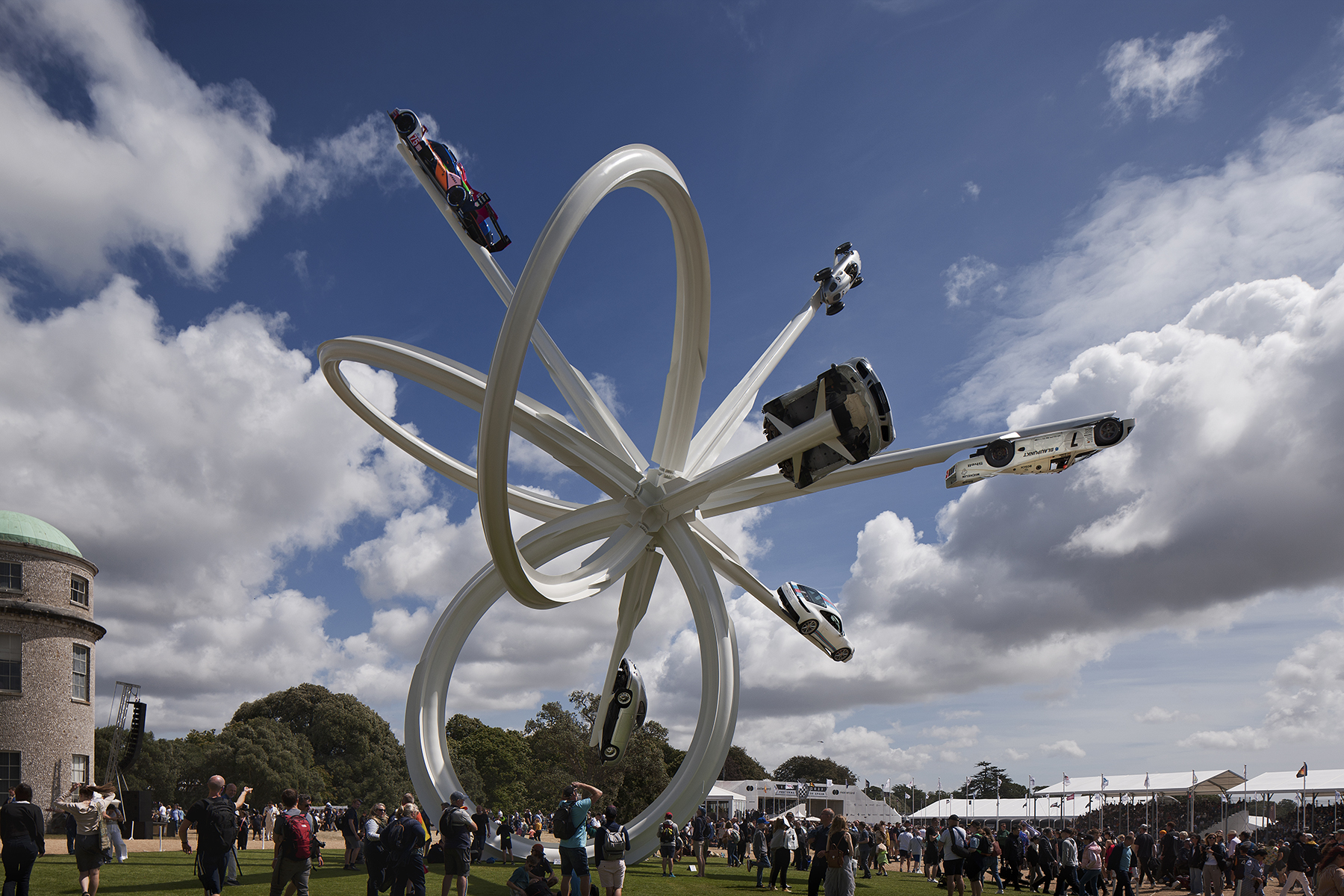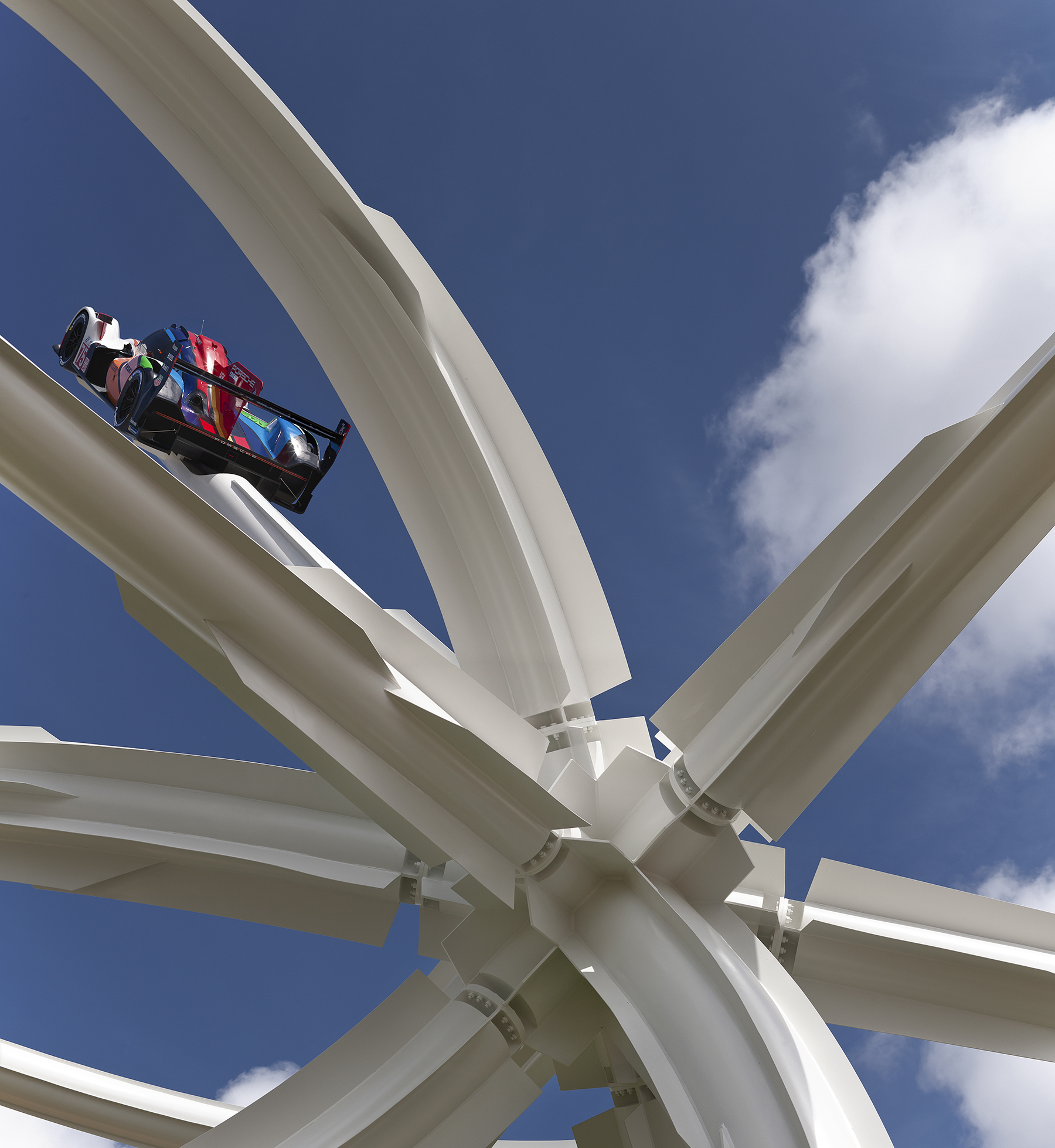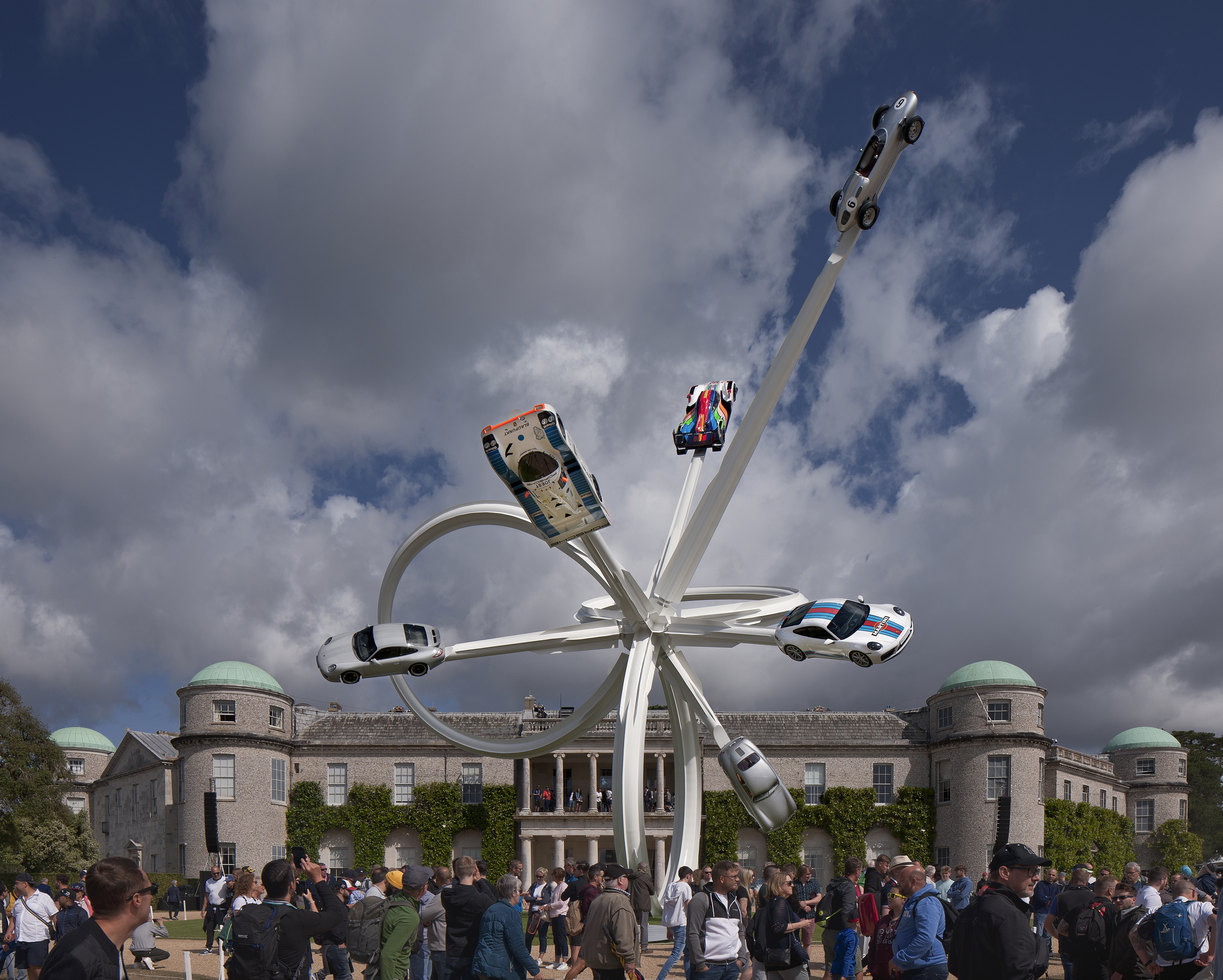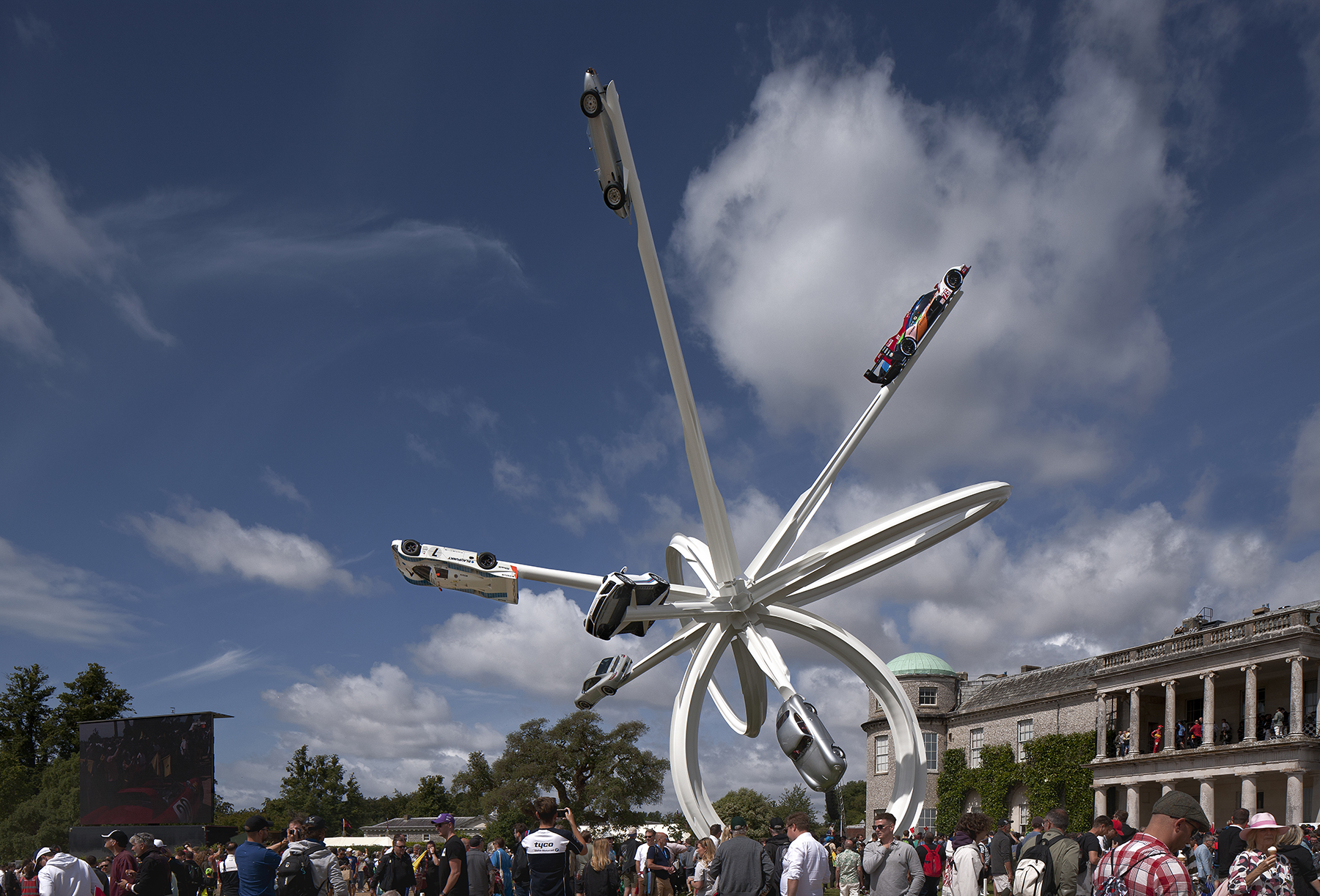By David Jen
Six priceless Porsche's took to the sky atop a structurally complex sculpture in July during the annual Goodwood Festival of Speed outside of Chichester, England.
Developed by sculptor Gerry Judah in collaboration with Diales Technical, the 40-metric-ton steel sculpture commemorated the 75th anniversary of the Porsche 356 — the German auto manufacturer’s first sports car — when it adorned the lawn of the Goodwood House during the four-day motor sports celebration.

The dynamic loops and spars also marked Judah’s 26th piece for the commission, which he began work with in 1997.
“I think normally, the general feeling (with the sculptures) has always been showing a sense of motion, a sense of dynamic,” says Judah. “That often is what makes everyone excited. Because you're coming to a festival of speed, you want to show that you're in a place of speed.”
In addition to the 356, a Porsche 962, 963, 718/2, 911 Carrera, and a 911 Sport Classic, ranging between 600 and 1,000 kg each, rode white spars emanating from a regular dodecahedron at the sculpture’s center.

“They are racers,” explains Judah. “They come out of museums, some of them come out from a race and they go back to a race the following week. They're all real functioning cars.”
The vehicles did, however, have their fluids drained and their suspensions locked, as they were attached by strapping their wheels into special wheel cups connected to the 25 m tall sculpture, continues Judah.
Technical considerations
Hooman Baghi, CEng, a technical expert and structural engineer at Diales who lent his expertise to the project, adds that while the sculpture’s final design came very close to Judah’s original sketches, considerations around torsional moments and resonance necessitated minor modifications.
“This year, it was very challenging because it was not as straightforward to find the balance and bring forward or push backward the center of mass or center of gravity (to where) the center of the stiffness is going to match,” says Baghi.
Dynamic loads, such as those produced by gusts of wind, will introduce twisting forces to a structure if its center of mass and center of stiffness do not coincide.
“A little bit of compromise from the design point of view, a little bit of scaling down some parts of the sculpture, just helped me to bring the center of mass (nearer to) where it should be,” continues Baghi.
Diales structural designer Bruno Postle, another project team member, also tried to keep the center of mass as low as possible to keep the structure stable.

In addition to twisting, wind blowing across the long arms also risked adding catastrophic amounts of energy to the system if the team failed to pay proper attention to the sculpture’s resonant frequencies, says Postle.
“The structure is very similar to a series of flagpoles,” he continues. “It’s a lot of cantilevered poles that potentially wiggle around. If you get the right wind speed and the right gust speeds, then you can get them to resonate and shake themselves to pieces.”
Slight modifications to the arm lengths imparted different natural frequencies to each, eliminating any risk of them interacting with one another.

Postle also tried to create the illusion of continuously changing radiuses in the hoops — a manufacturing challenge — by joining sections of different fixed radiuses together.
"In the past, we’ve made these curves out of maybe five different radiuses, but if you get it right, you can do it out of two," which was the case for this year's sculpture, explains Postle.
“If we get the right proportions between the two radiuses, then your eye doesn’t notice the transition.”
The hoops arrived on-site in three pieces each, while the arms, with the longest spanning about 16.5 m, arrived preassembled in single pieces.
The sculpture’s lowest hoop was then bolted to the same foundation that has supported the festival's sculptures year after year — an eight-metric-ton steel grillage embedded in the concrete within the Goodwood lawn — before the hub and remaining hoops and arms were attached.
After the festival, the sculpture was disassembled in the reverse order of assembly, leaving the steel and concrete foundation, which has itself evolved throughout the years to accommodate the different contact points required by the different sculptures.
The Goodwood Festival of Speed
The overall Goodwood Estate began as a hunting lodge for the first Duke of Richmond in 1697 but has since grown to nearly 12,000 acres, which today includes the Goodwood Motor Circuit and the Goodwood Aerodrome amid the bucolic Sussex Downs, less than 2 mi northeast of Chichester.
A long-standing motor sports tribute and garden party, the Goodwood Festival of Speed has featured high-octane attractions — such as a hill climb, Formula One cars, and supercars — since 1993, when Charles Gordon-Lennox — then Earl of March and Kinrara and now the 11th Duke of Richmond — sought to revive the Goodwood circuit that served as the “spiritual home of British motorsport” from 1948 to 1966, according to the Goodwood website.
“Preparing the park for that first Festival was not the huge task that we see today,” wrote the Duke about the festival in 2020. “Once Nick the shepherd had rounded up his sheep, and taken them to a quieter place, we set about making the park ready.”
In contrast, Baghi estimates close to 1 million visitors attended this year’s festival, which also celebrated Goodwood’s own 75th anniversary and continued with its Revival event — a period-dress race.
But after 26 sculptures, Judah sees something else through the crowds and machinery.
“This thing is not about cars,” says Judah. “And it's not even about sculpture. It’s about excellence, and that's what we strive for.”
This article is published by Civil Engineering Online.



